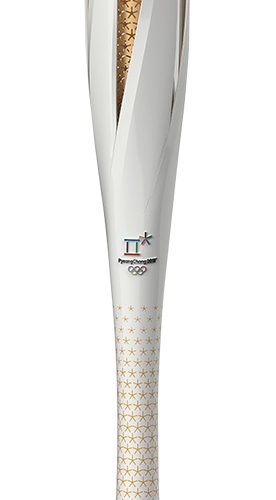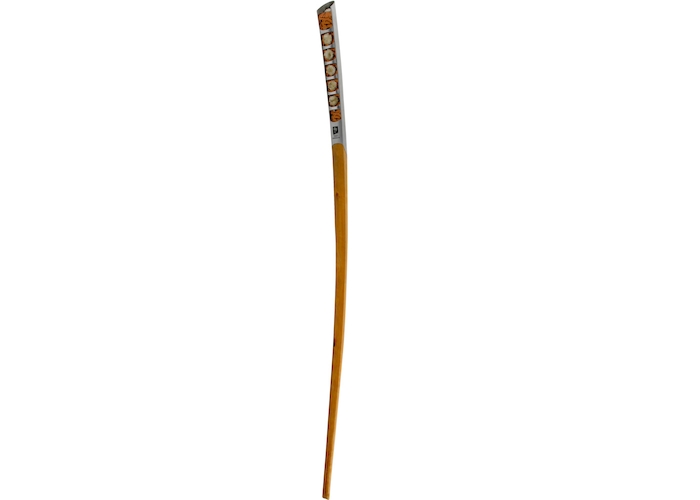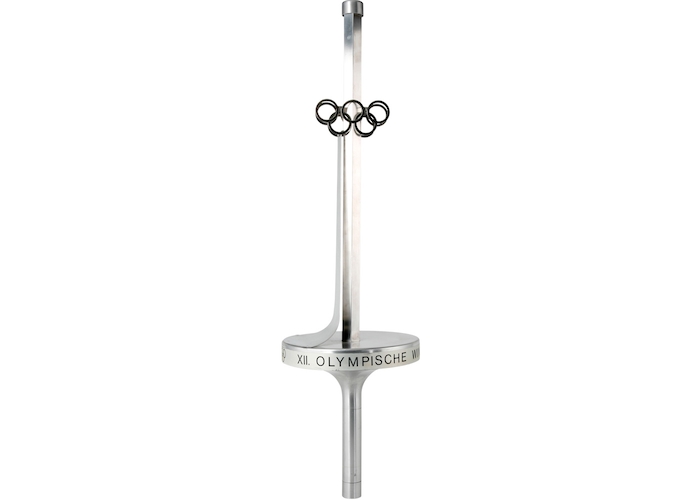With less than 100 days to go until Pyeongchang 2018, the Winter Olympic Torch Relay is in full swing. Britons Ellie Simmonds, Jamie Nicholls, Amy Williams and Susie Rodgers have all been involved in the relay so far, as athletes that embody the ‘Achievers and Dreamers’ label of the Pyeongchang 2018 torchbearers.
While the Pyeongchang 2018 Olympic Torch above has proven very popular, with a sleek white and gold design, Winter Olympic torches throughout the years have tried and tested many unique looks. From design to symbolism, here we are giving you a look at our five all time favourite Olympic torches.
1. Lillehammer 1994
The long, thin design of this torch is striking, particularly when compared to the shorter torches that came before it and the more conical designs that came after. The long birchwood handle is intended to symbolise the traditional side of Norway, while the metal of the blade reflects its advances in technology and industry.
However unique the design though, it is really the events of the Lillehammer 1994 Torch Relay that really set this torch apart. For the first time in history, this Olympic torch was passed between two parachutists, high above the German town of Grefrath. Then, not content with just one incredible torch transfer, Stein Gruben amazed those gathered at the Opening Ceremony by jumping from the ski jump while holding the torch. Gruben had taken the place of the original torchbearer Ole Gunnar Fidjestol, who had injured himself during rehearsals for the ceremony!
2. Turin 2006
One of the most well travelled torches, the Turin 2006 Winter Torch visited Greece, Italy, Vatican City, San Marino, Slovenia, Austria, Switzerland and France during its relay. The Italian leg ventured into neighbouring countries to include previous host cities Albertville and Grenoble in France and when the flame stopped in Cortina d’Ampezzo, it was exactly 50 years to the day since the 1956 Olympic Winter Games there.
The design and production of the Turin 2006 torch was the result of 18 months work by 30 people, an incredible total of over 20,000 hours’ work. The unique shape of this torch is supposed to be reminiscent of both a ski tip and the monument which is the symbol of Turin: the Mole Antonelliana. Another striking design, it utilised technology based on an internal combustion system to create a sense that the metal itself was on fire from all sides, rather than the flame coming emerging from the top of the torch. This was supposed to act as a reflection of the traditional wooden torch.
While some may not love the design, this torch was awarded the “Lorenzo il Magnifico” award, the highest prize awarded by the Florence Biennale of Contemporary Art.
3. Innsbruck 1976
One of our favourites in terms of design, this torch is simple, sophisticated and hails back to an earlier era. The upper part of the torch was hexagonal, with the Olympic symbol in openwork and a metal strip that was designed to represent a ski jump run. However, it’s not just the design that makes this torch such a favourite of ours. During the Innsbruck Torch Relay, Austrian skier Christl Haas used this torch to become the first ever woman to light an Olympic Winter Games cauldron. Definitely a worthy inclusion as a top torch!
4. Alberteville 1992
 It’s not everyday that an Olympic torch looks like it just crawled off the set of Alien, but the Albertville 1992 torch’s unique design does (to some eyes) resemble something from a Ridley Scott movie. Formed of gilded brass, it is shaped like a miner’s lamp, with the emblems of the torch relay and the Albertville Games engraved upon it. While the design may not be to all tastes, it certainly stands out!With the 1992 relay, the aim was to cover as much of France as possible by passing through all the regional capitals. The relay lasted 57 days, echoing the 57 events that were to take place at the Albertville Winter Games.
It’s not everyday that an Olympic torch looks like it just crawled off the set of Alien, but the Albertville 1992 torch’s unique design does (to some eyes) resemble something from a Ridley Scott movie. Formed of gilded brass, it is shaped like a miner’s lamp, with the emblems of the torch relay and the Albertville Games engraved upon it. While the design may not be to all tastes, it certainly stands out!With the 1992 relay, the aim was to cover as much of France as possible by passing through all the regional capitals. The relay lasted 57 days, echoing the 57 events that were to take place at the Albertville Winter Games.
5. Calgary 1988
The shape of the torch was designed as a replica of the Calgary Tower, featuring an inscription for the Olympic Winter Games Calgary Alberta Canada 1988 as well as the Olympic motto Citius, Altius, Fortius (faster, higher, stronger). The Games emblem and the 10 sports pictograms were laser engraved on the handle, including skiing, skating and bobsleigh.
The Calgary 1988 torch covered 18,000 km in Canada during its relay; 11,000 km on the ground and the remaining 7,000 km by plane, helicopter and ferry. The route was designed so that the time spent in each province and territory was proportional to the resident population, a unique touch.






